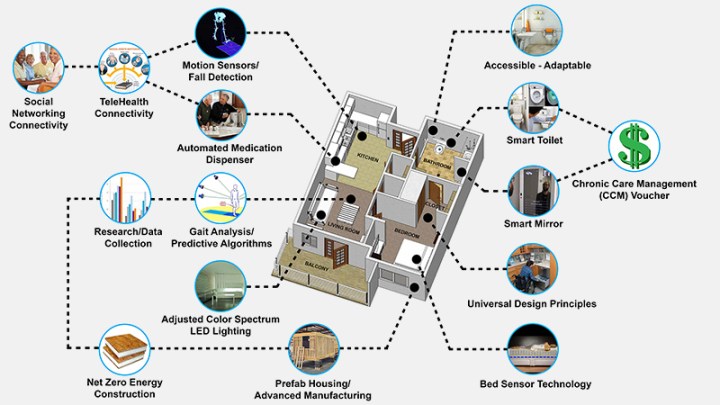
Colistra is the design and planning associate professor at the University of Kansas School of Architecture. Using two awarded grants totaling $51,000, he and his fifth-year students will build part of a home embedded with sensors to collect the biometric data of its residents.
“With Kansas City having Google Fiber, you ask yourself: What would you do with unlimited bandwidth? So we proceed to the question of big data collected through the built environment,” Colistra said in a statement to the university. “What if your house could capture your heel strike, the number of times you left your apartment, the number of times you go to the bathroom, how much sleep you got last night? The idea with connectivity and the Internet of Things is to link all that data together.”
These sensors would be sensitive enough to use with predictive algorithms. For seniors, sensors in the floor could automatically alert someone if a resident has fallen. Or, if there is a new stutter in a resident’s step, it could notify them of a potential early sign of Alzheimer’s. Smart mirrors could identify new moles, lesions, or the effects of a stroke. Sensors in the toilet could keep track of a resident’s hydration levels and how much waste they are producing. Most of these sensors exist in other devices, but this would be done automatically in the background, without the need to turn anything on.
“We are looking at the possibility of taking hydration readings that might lead to adjusting your diuretic or heart medication on the fly,” said Colistra. “It could revolutionize geriatric medicine. Your housing unit could be like a medical device; it takes care of you.”
The team expects to complete the project by the end of this school year using prefabricated components including walls and floor panels. This approach should allow the items to remain economically viable on a larger scale. Results will be presented at upcoming conferences including Makers Faire Kansas City in June.


